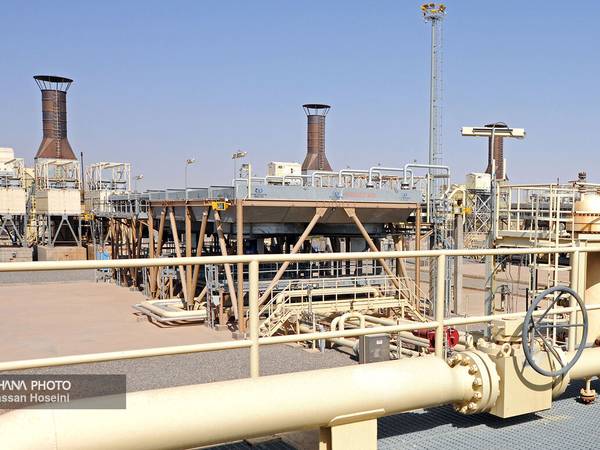Iran's two-decade delay in developing its underground gas storage (UGS) facilities, has exacerbated winter gas shortages and export disruptions, despite having the world’s second largest reserves.
Underground Gas Storage facilities (UGS) are not man-made facilities, but are depleted oil or natural gas fields, aquifers, mines, and salt caverns that have the geological properties to store natural gas over long periods.
Despite initiatives under President Ebrahim Raisi's administration, progress on several UGS projects remains limited as of the end of 2023, according to a report from the National Iranian Gas Company (NIGC) obtained by Iran International.
Initially, Iran launched two UGS projects, Shourijeh and Serajeh, around twenty years ago, with a combined capacity of less than 3.5 billion cubic meters (bcm). However, as of summer 2023, only 3.1 bcm of gas had been injected into these facilities for consumption during the winter season. Their gas re-extraction capacity, totaling 30 million cubic meters per day (mcm), represents less than 4% of the winter peak consumption level, surpassing 850 mcm/d.
Iran has 250-300 mcm/d of gas deficit in winter and UGSs compensate only 10% of that. The NIGC’s report says the expansion of Serajeh phase 2 has developed by only 3% and Shourijeh phase 2 progressed only 17% as of end-2023, far behind the plan.
Additionally, the National Iranian Oil Company's exploration of three new UGSs has faced delays, with only modest progress made on two projects, raising uncertainty about their feasibility as gas storage facilities. These sites are situated in close proximity to major industrial cities such as Tehran, Isfahan, and Tabriz, where gas demand is high.
All of the exploration area for new UGSs are located very close to Iran’s industrial cities of Tehran, Isfahan and Tabriz.
Iran’s large industries need about 145 mcm/d of gas, but only 110 mcm/d was supplied during last winter due to severe gas shortage.
Although Iran holds the second largest reserves in the world, lack of investment in developing new fields and rehabilitating older ones has lagged behind in the past two decades due to lack of investments and technology. International and US sanctions, as well as financial mismanagement by the government have prevented Iran from fully exploiting its vast natural reserves.
In a related context, Mehdi Mahdavi Abhari, the Secretary-General of the Petrochemical Employers Association, announced last week that Iran lost $800 million in petrochemical exports due to gas shortages last year.
The document from the National Gas Company reveals that during the summer, nearly 70 million cubic meters of gas were supplied daily to petrochemical plants, 20 million cubic meters to cement factories, 36.5 million cubic meters to steel mills, and 17.7 million cubic meters to refineries. In total, during the summer, 145.5 mcm/d of gas were delivered to the country's major industries. However, on January 12 this year, this figure decreased to 110 mcm/d.
Global UGS industry
Iran’s neighbors Azerbaijan and Turkey have expanded their UGSs capacity to 3.5 bcm and 5 bcm respectively during past two years to enhance their export and transit abilities. Meanwhile, UAE and Saudi Arabia are also building their first UGS facilities.
Although there is no updated global UGS market report for 2023, 2022 witnessed a notable increase in capacity, driven by the global gas crisis. This underscores the importance of storage for supply security, with China and the Middle East emerging as key growth markets for UGS activities.
According to Cedigaz, the International Association offor Natural and renewable Gases, by the end of 2022, the world’s working gas capacity reached 429 bcm, a 1.3% rise from the previous year, with significant contributions from China and Europe. The peak withdrawal rate also rose by 1.7% to 7.3 bcm/d.
While the UGS market remains highly concentrated, with 5 countries (United States, Russia, Ukraine, Canada and Germany) accounting for almost 70% of global storage capacities, there is a clear shift of storage activity towards new, fast growing gas markets, China and the Middle East notably.
